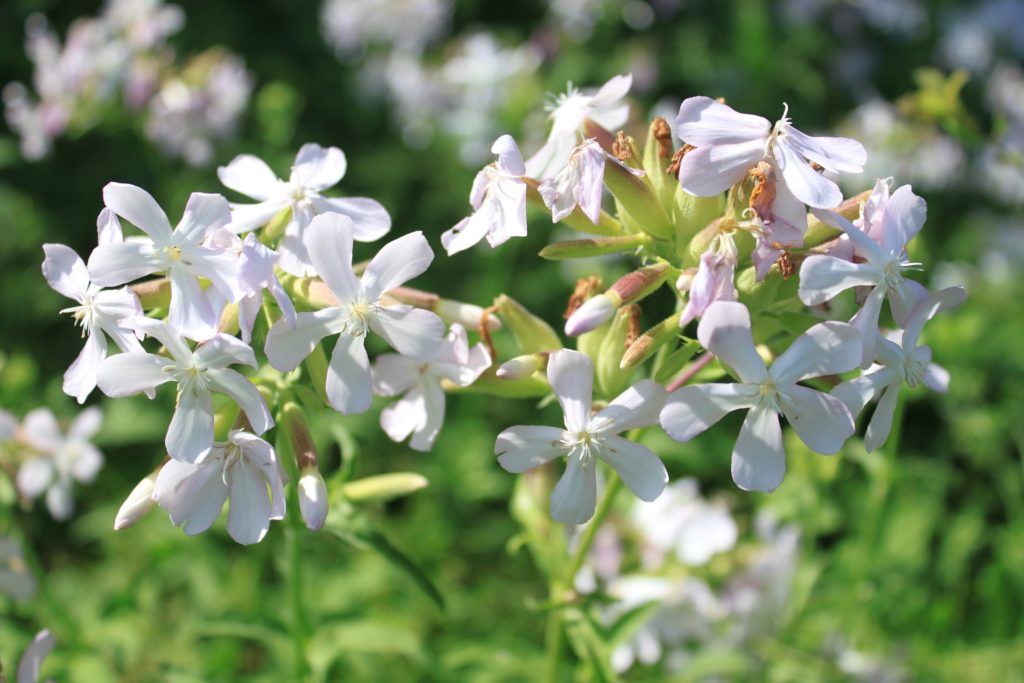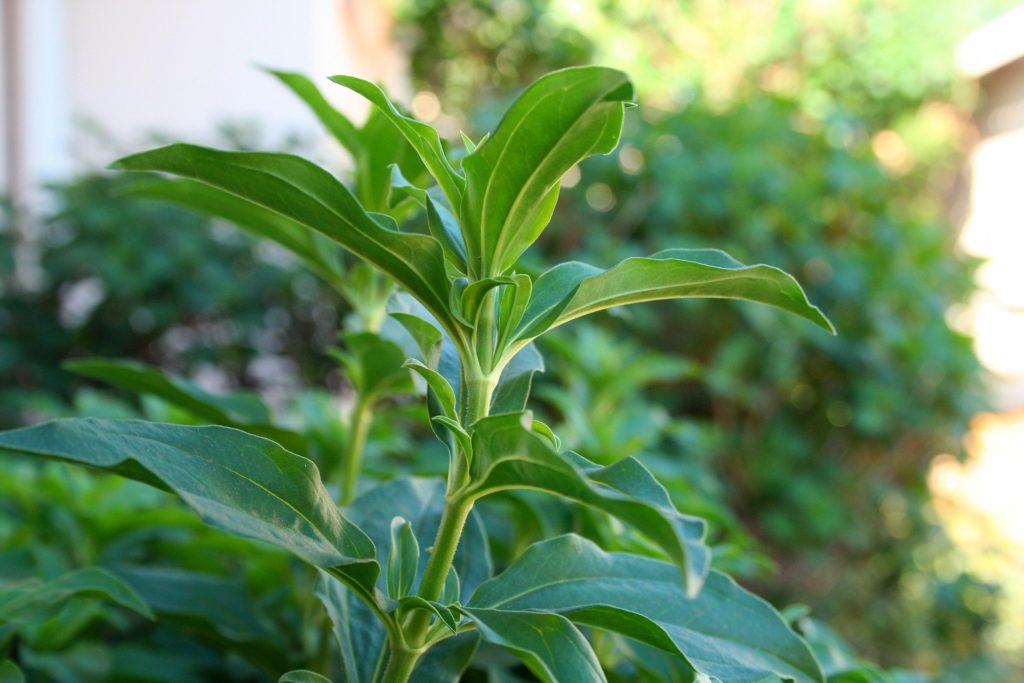Saponaria officinalis

Also known as bouncing bet, crow soap, wild sweet William or soapweed.
The story…
Soapwort is native to Europe and naturalized on all five continents, where it grows in relatively cold climates. It thrives in hedges, bushes and roadsides, where it can quickly become invasive, and flowers from May to September. The rhizomes contain saponins (up to 20%), molecules that foam water and allow it to be used as soap. Ancient Romans held it as a symbol of purification and this method is still used today, especially to clean fragile ancient tapestries. In the Middle East, the infusion of soapwort is used in desserts requiring gelification, such as Turkish halva.
Uses
Sensitive skin
Soapwort can be used as a substitute for soap in case of skin problems, from acne to skin diseases and burns. It washes and disinfects, while being less aggressive than conventional soaps, and can be used for the face, body or as laundry. Added to bath water, it soothes itching.
Preparation
Boil 100g of rhizomes in half a liter of water for 10 minutes. Use shortly after preparation.
Precautions
Ingested in high doses, soapwort can cause nausea, diarrhea and vomiting. In case of persistent symptoms or if you have any doubts, consult a doctor.
